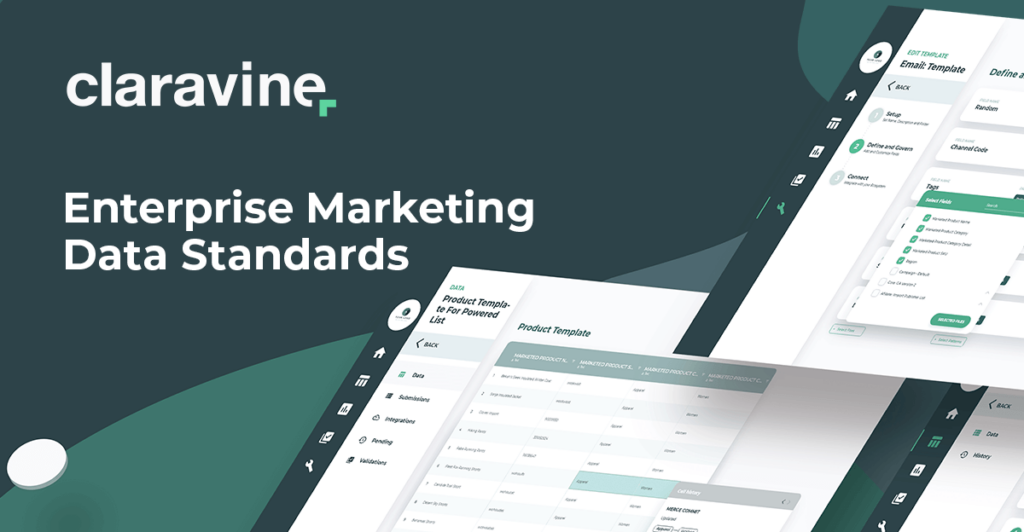Look to These MarkOps KPIs to Drive Maximum Results, ROI, and Team Growth

Your company’s revenue depends heavily on decisions informed by your marketing operation’s key performance indicators, or KPIs. A data-driven marketing (and business) strategy is only successful when it’s built upon the right KPIs.
A data-driven analysis helps marketing operations leaders find gaps in the marketing plan, gain new insights, and discover trends. Despite fierce competition for attention and many KPIs to watch, many marketing leaders ignore the most crucial ones, resulting in incomplete information and a waste of money and time. A 2021 survey by HubSpot discovered that 74% of marketers didn’t know their campaign performance metrics.
Choosing the proper KPI involves answering questions like:
- What is your company’s core business?
- What is your company’s goal? To sell more or to generate more leads?
- What are the results needed to make the campaign successful for every stakeholder?
“Top KPIs? There’s no consensus amongst marketing operations professionals. Some are driven by traditional marketing metrics — high-level, like revenue, sales, and channel-specific views on them,” explains Michael Shearer, Sr. Director, Digital Innovation & Strategy at Clarvine.
“But others are driven more by something like sprint performance, a common software dev-type metric for project management,” he continues. “NPS feedback from internal stakeholders on the efficacy of marketing’s support on their own sales, retention, and upsell objectives can also factor in.”
How you go about measuring a marketing operations team will depend on the needs of the business, its stakeholders, and how they view success. But if you want to approach them with a holistic dashboard that will probably show them value in their language with little translation, look to these 13 crucial marketing operations KPIs.
But first, a quick note on the data informing your KPIs.
Marketing Operations KPIs
Protect Your KPIs from Poor Data Integrity
Having the right KPIs will help you make the right decisions, but the right metric informed by bad data (low quality, not standardized, no integrity) can be disastrous. The consequences of bad data include:
- ROI miscalculations — diluted, inflated, and overall untrustworthy
- Misinformed decisions and competitive insights — doing the wrong thing and losing ground in the market
- Frustrating customer experiences and failed personalization — costing you business
- Challenges to adopting and implementing high-tech solutions run on heavy data streams
- Erosion of organizational trust in data — hampering the ability to embark on new projects, investments, and strategies
- Degradation of product and service quality — to the point of ruining reputation or incurring massive fines
- Millions of dollars wasted on data cleanup just get to the starting line
“I’ve spent more than 20 years improving marketing, operations, and customer experience metrics to, of course, increase marketing-driven revenue,” adds Shearer. “And the one element that influences every KPI and your ability to measure it? Data integrity. If you can’t trust your data, you’re essentially flying blind.”
Poor data integrity leads to ineffective KPIs, resulting in time and resources wasted. Data with integrity, on the other hand, can be trusted to feed into KPIs that guide major business decisions.
1. Cost Per Acquisition (CPA)
Customer acquisition cost is the total cost to push a lead to a customer. Both digital and outbound marketing are included in this; comparing both will give better insights. This calculation is time-based and shouldn’t be ignored. It shows if the company is spending more money.
The formula is:
CPA = Total cost / Number of new customers acquired
For example, if the total marketing and sales expenses for a month are $20,000 and ten new customers are acquired, the CPA will be $2,000. You can calculate the cost per acquisition based on campaign type, and this will tell you where you are spending too much and where you should invest more.
Your CPA should be justifiable. You can’t spend $20,000 to acquire ten customers for a product of $1,000 and expect your boss to be happy.
Don’t forget to include workforce, software cost, marketing distribution, and general overhead into the total cost.
2. Conversion Rate (CVR)
Conversion rate is the percentage rate at which a customer follows your funnel or completes a goal, such as how many and how long it took to click on a CTA button, provide their email address, or purchase a product. Watching this KPI helps marketing operation leaders know which content and campaigns drive customers more effectively.
You can quickly analyze this metric with Google Analytics, HubSpot, and any analytics recommended by your company.
To calculate conversion rate, use:
CVR (%) = (Number of conversions / Number of sessions) x 100
You can calculate this metric in two different ways if you have multiple conversion goals.
- Calculate for a specific completion goal, e.g., email listing. In this way, you can obtain a narrowed metric that will significantly assist in tactical decisions or during an A/B test.
- Calculate for the entire website conversions and sessions; this can help improve your long-term strategies and overall customer journeying.
3. Bounce Rate
A bounce rate is the percentage of visitors to a website who leave after viewing only one page.
The formula is:
Bounce rate = Sessions that view only one page / Total number of sessions
A high bounce rate means your clients don’t have trust in your content or your website has:
- High loading time
- Slow page speed
- Improper alignment to user intent
A lower bounce rate will improve sales and shouldn’t be ignored.
4. Return on Marketing Investment (ROI)
ROMI can be difficult to measure, but it’s one KPI your boss absolutely wants to see. In simple terms, it’s the revenue generated from a campaign compared to the cost of that campaign.
It shows if campaigns are successful and can be calculated as follows:
ROI = (Sales Growth – Mktg Cost) x 100 / Mktg Investment
The return on marketing investment is difficult to quantify due to many distinct campaigns and a lack of control. Following Oracle, Marketers should measure ROMI against the following benchmarks: industry, campaign investment, same month last year, and what your boss expects the results to be.
5. Click-Through Rate (CTR)
This metric gives a better view of a marketing ads campaign. It shows how many people click on your CTA or website link per 100 ads impressions. CTR is effective when your goal is to get people to click on a button. Wordstream carried out an analysis in 2021 that reported that the average click-through rate across all industries is 6.18%.
The formula is:
CTR% = (Number of clicks x 100) / Number of ad impressions
Click-through rate is an essential metric for your PPC ads. A low CTR indicates you are targeting the wrong audience and vice versa. When using CTR information, you can provide a reliable strategy for guiding a prospect to the final page.
It’s a good indicator of how well your headlines, images, CTAs, and articles are performing and gives you an idea of what your audience wants. On any kind of website, it will be difficult to come up with a strategy that can lead prospects from one page to the next without CTR metrics.
6. Sales Cycle
The time it takes for a prospective customer to become a paying customer. When you analyze how long it takes to convert a lead, you can identify where stalling happens. Marketing professionals love this KPI since they can forecast revenue and understand why leads are stalling.
Calculate the average sales cycle using this formula:
Avg sales cycle = Total days to close all sales / Total sales
Sales cycles vary across various industries. The more expenses a product is, the longer the average sales cycle. In addition, payment terms, market maturity, customer profile, and stakeholder number can affect the average sales cycle.
7. Cost per Lead (CPL)
This gives marketers the metric they need to justify their spending budgets compared to lead value. Getting a lead is the first stage of marketing. The more leads, the better. Calculating how much it cost to get a lead gives the metric to forecast sale
s goals and potential ROI.
The formula is:
Cost per lead = Total campaign cost / Total leads acquired
8. Lead Value
The cost per lead and lead value KPIs go hand in hand. There is a problem if your lead value is less than the cost per lead. Marketers can tell if they are making progress or failing at lead generation by comparing this marketing operation KPI.
A data-driven understanding of lead value allows marketers to make more effective decisions about acquiring more, higher-quality leads. Moreover, you can determine which marketing channels generate the best quality leads based on proper analysis.
Use this formula:
Lead value = Total sales value / Total leads
9. Revenue Generated by Marketer
As a marketing operations leader, it will benefit your entire team if you can identify marketers that are facing challenges to success or struggling to find their strengths and weaknesses. The idea is to evaluate the marketer’s total revenue generated within a certain period.
To calculate revenue generated by a marketer, use:
Revenue = Total revenue within a period / Number of marketers
Using this metric analysis, you can identify campaign types that a marketer is better at, which will increase overall revenue generated.
10. Revenue Generated by Channel (Channel-Sourced Pipeline)
A B2B firm has little to gain by campaigning on Instagram. It would be a waste of time and money for a fashion firm to campaign on LinkedIn. Analyzing revenue generated by a channel will tell a marketer leader which channel needs more funding.
It is calculated by checking out the total income made from sales made. Each channel should be analyzed separately. Use this:
Revenue = Total revenue within a period / Number of channels
11. Project Completion Rate & Time to Completion
MarkOps leaders rely on continuous progress to hit any of the above KPIs. One of the most important metrics, then, is simply getting the work done. Project completion rate and time to completion can be estimated, measured, and reviewed on a team, individual, or project basis.
Calculating project completion rate can be as simple as:
Project completion rate = Successful projects / Total projects
While time to completion would simply compare actual project duration to estimated. Or, it could make sense to set an average KPI:
Avg time to completion = Sum of project hours / Total number of projects
If either of these KPIs cause alarm, it can be a leading indicator of other KPI disappointments, as projects fall behind and performance suffers. It can also highlight inefficiencies in tools and workflows. Of course, it will highlight human elements, too, such as team dynamics, individual challenges, or standout efforts.
When reviewing martech decisions, these metrics will gauge productivity, value, and necessity. They can also raise red flags regarding martech adoption across teams or access to the right — and enough — data.
12. In-House Martech Product Adoption
Simply put: is your team (or teams) actually using the SaaS you pay for? Are they using all features available to them? Are they at subscription capacity — or on an overkill plan? MarkOps leaders make strategic buying decisions and put hours of their time into vetting and onboarding vendors.
They should exert, then, some kind of effort to evaluate those decisions. Martech adoption can be considered a rate or percentage, or it can simply be yes/no to certain tools, features, and administration levels. That could be a simple formula, similar to the above.
Multiplying the monthly or annual spend on marketing SaaS by this adoption percentage could tell you one very important thing, though: the amount of money you’re wasting on unused technology.
And while SaaS subscriptions and costs aren’t as black and white as use-based pricing, these calculations can highlight key places to cut (or extend) spending to optimize resource efficiency. Cost savings can then be reallocated to invest in different or more advanced tools, and advanced software to improve data collection and processing.
13. Marketing-Sourced Pipeline (Leads, Sales)
The big one: the money. At the highest level, the whole department will be judged by the amount (and quality) of prospective customers put into the sales pipeline. Individuals, trial customers, accounts, organizations, vendors — however your sales team sells your products, they need trails to follow.
A range of 10% to even 70% and higher could be a realistic marketing-sourced pipeline goal, depending on industry, market maturity, market size, and other factors. It can include leads attributed to marketing content, email, social, paid media, and events — anything and everything the marketing team does.
To calculate marketing-sourced pipeline, simply use:
Pipeline % = (Marketing-Attributed Leads* / All Leads*) x 100
*Leads can be replaced by customers, revenue, et cetera — however your C-suite prefers it.
How to Improve Every KPI
Ultimately, if you clearly understand the above marketing operations KPIs as a leader, your business will reach new heights in no time. Despite having a good understanding of KPIs, poor data quality and a lack of data integrity can still lead to bad decisions.
For a company to succeed in the long run, it cannot base its decisions on assumptions or hunches. Trusted facts and high-quality data are a must. Across dozens of disparate marketing and advertising tools, teams, and campaigns, a standard data language can take collaboration and measurement to the next level.









